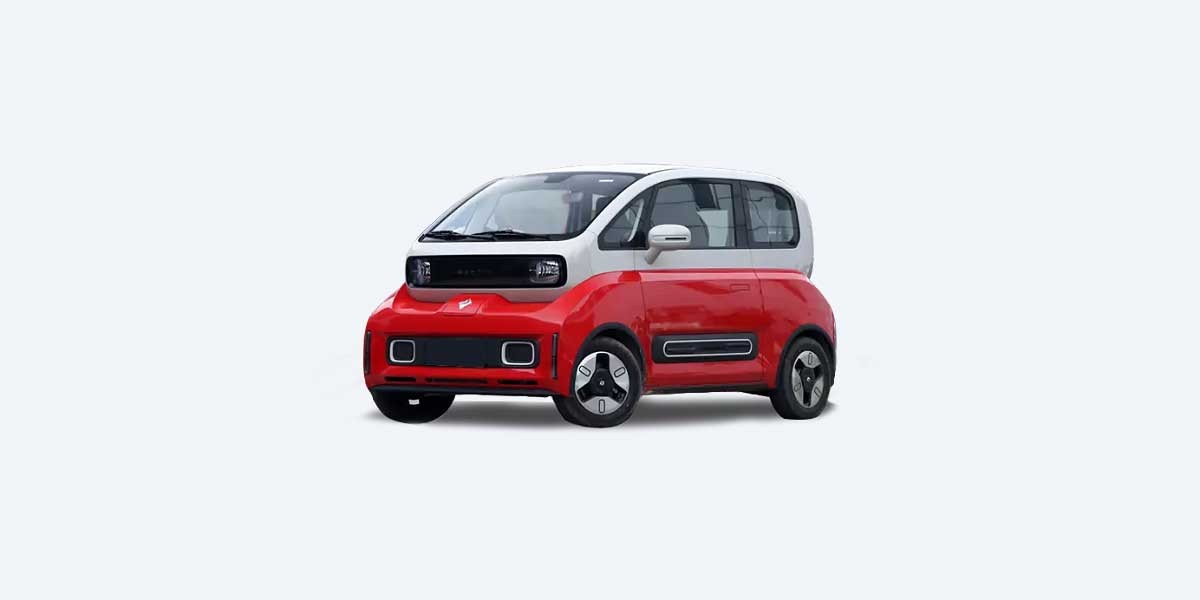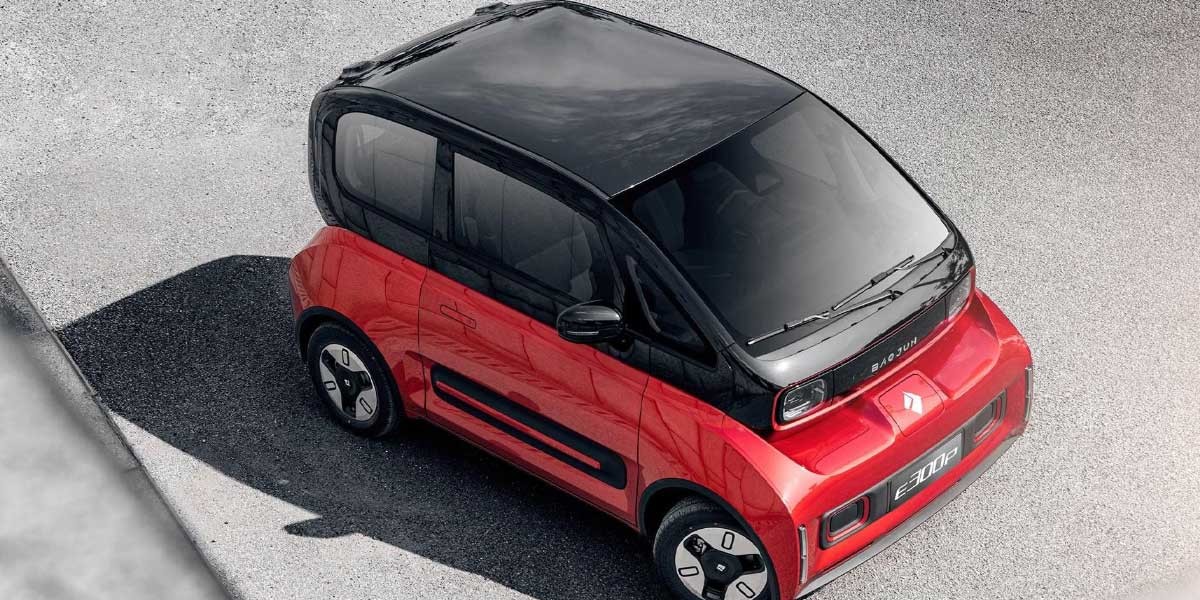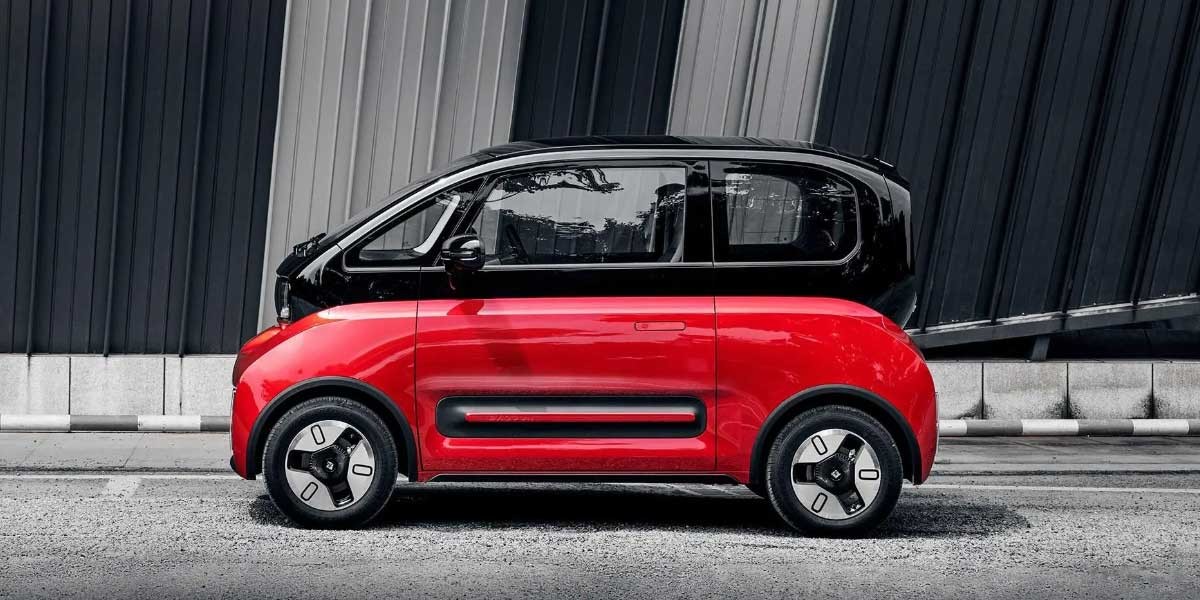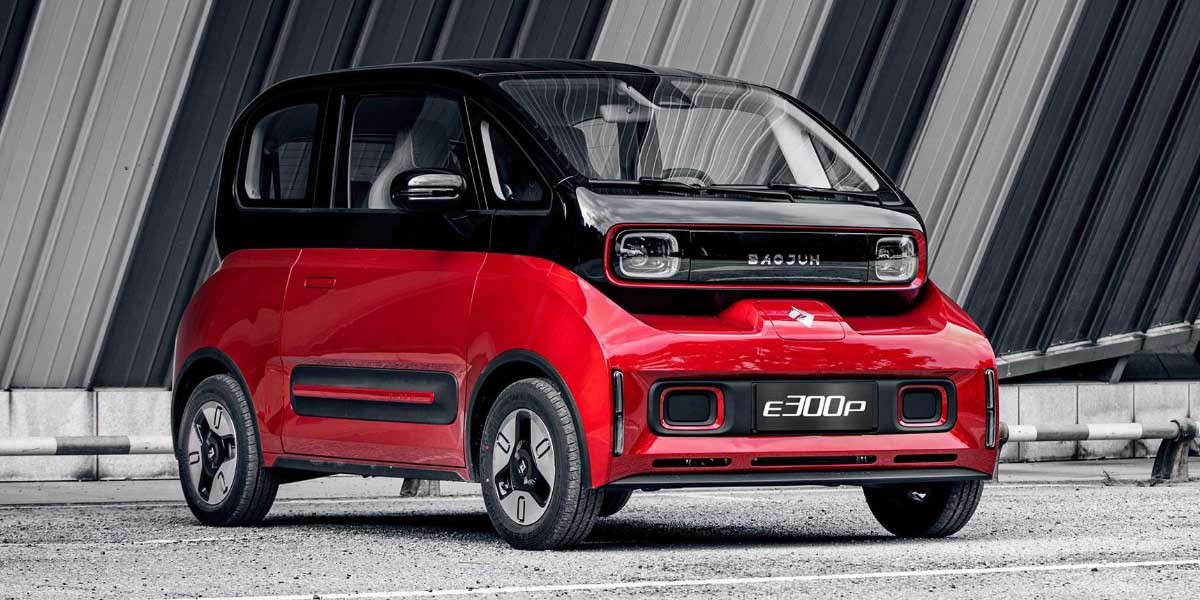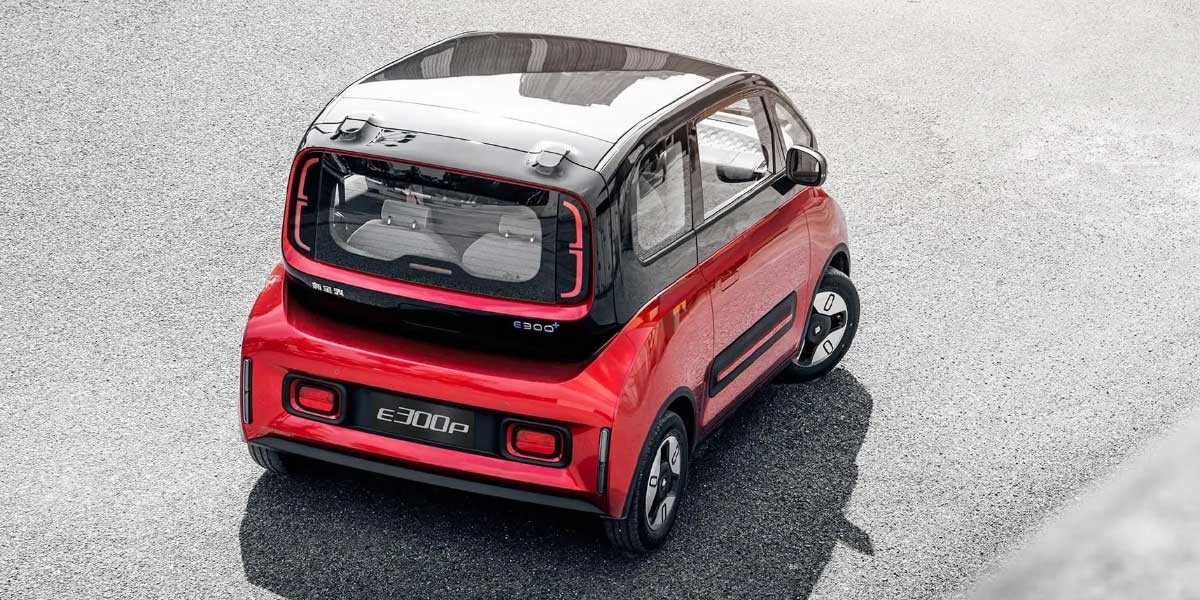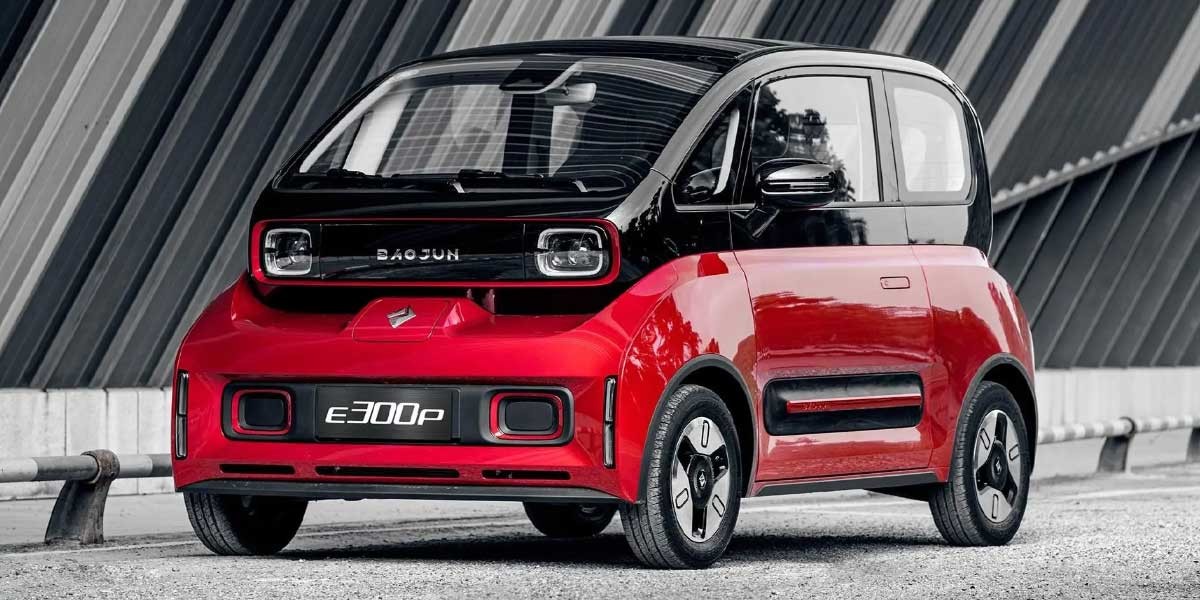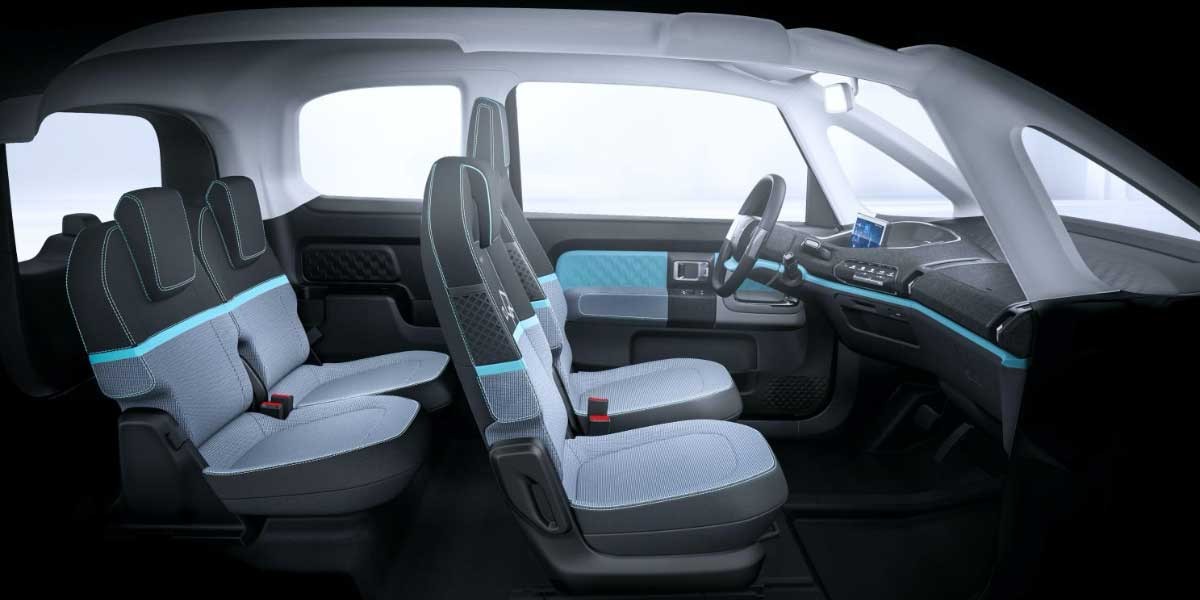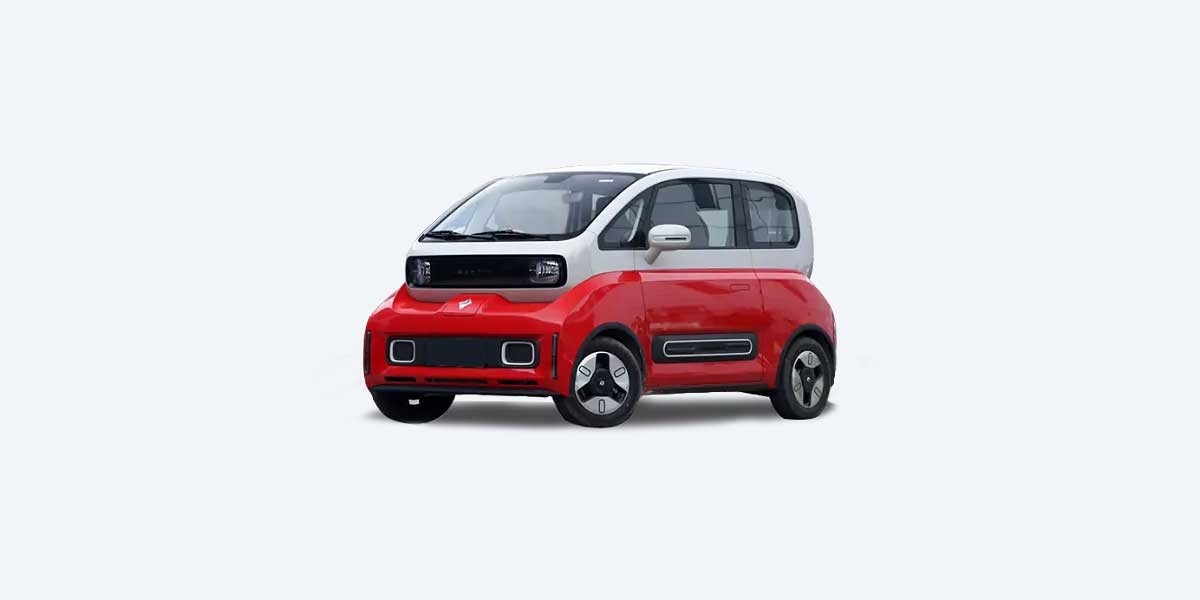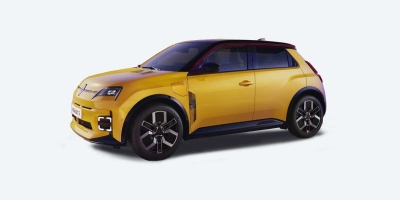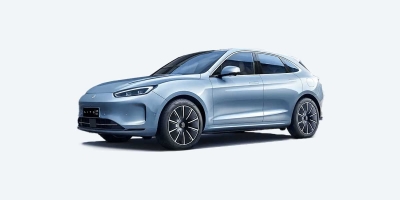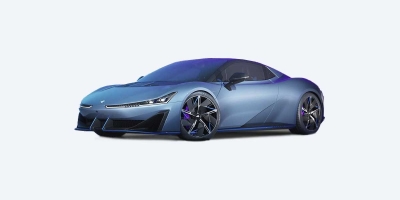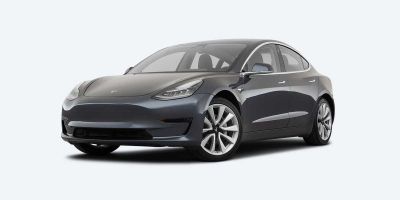Baojun E300
User Rating: 3.59 / 5
![]()
![]()
![]()
![]()
![]()
Baojun E300 Review ⚡
What is Baojun E300?
Baojun E300 is an electric compact car designed for nimble city driving. With its efficient use of space and electric powertrain, it offers an eco-friendly alternative for urban commuters, featuring cutting-edge technology and smart connectivity options.
Baojun E300 price:
US$ 10000 *
| manufactured in | China |
| sales start | 2020 |
| range (km) | 305 |
| battery (kWh) | 31.9 |
| max. speed (km/h) | 100 |
| 0 to100 km/h | No data |
| power (h.p.) | 54 |
| car type | hatchback / 3 doors |
| drive type | FWD |
* Minimum price set by the manufacturer, excluding taxes and additional options
Baojun E300: The Electrifying Charge into Micro-Mobility
Amid the electrifying dash towards more sustainable modes of transportation, the Baojun E300, or as it’s affectionately known, the Baojun KiWi EV, zips into the fray as a sleek, compact powerhouse. Forged in the innovative forges of the SAIC-GM-Wuling (SGMW) consortium under the reputed Baojun marquee, this battery-powered city cruiser has been capturing the imaginations and eco-conscious hearts of the urbanite demographic since it first rolled off the assembly in 2017. Let’s dive headfirst into what makes the Baojun E300 the talk of the town, scrutinizing its inception, the nuts and bolts under its hood, the crux of its safety arsenal, and a smattering of other facets.
Origins and Evolution
Emerging from the curtains in December 2019, the Baojun E300 made its entrance with a silhouette that broke the monotony of conventional car designs, proudly parading its cubic demeanor. This outing marked its induction into the new energy vehicle (NEV) category, spotlighting its green credentials. It swaggered onto the stage in Guangxi in January 2020, setting the stage ablaze with anticipation from auto aficionados. By May 2020, it had commenced its courtship with the Chinese market, signifying a pivotal moment in the electric vehicle domain. A nip here and a tuck there in August 2021 morphed it into the Baojun KiWi EV, upscaling its allure substantially.
A Cornucopia of Choices
With an architectural philosophy that speaks to the eclectic, the Baojun E300 proffers itself in the standard model, apt for duos or trios, and the elongated E300 Plus variant, which wraps four souls in comfort. This duality caters adeptly to the lone rangers or the familial band traversing the concrete jungle, ensuring a suitable steed stands ready, regardless of passenger tally.
The Heart of the Matter: Specifications
At its core, the Baojun E300 thrums with the vigor of a synchronous motor teamed with a rear-wheel drivetrain. This ensemble belts out a brawny 40 kW (54 hp; 54 PS) of max power and 150 N⋅m (111 lb⋅ft) of torque, delivering a zippy yet efficient crusade through the urban sprawl. Boasting a maximum velocity of 100 kilometers per hour (62 mph) and a compatibility with DC fast charging, it reaches its zenith charge within a scant hour, a blessing for the perennially on-the-move.
The zenith model of the E300 Plus brandishes a hefty 31.9 kWh (115 MJ) battery, bequeathing an NEDC range of a whopping 305 kilometers (190 miles). This generous allotment of range disarms any trepidation over range anxiety, rendering it a stalwart companion for both daily sprints and the occasional escapade beyond city limits.
Cruising on Clouds: Superior Suspension
Adorned with the McPherson independent suspension and its compatriot, double wishbone independent suspension, the Baojun E300 glides over tarmac with nary a care, enfolding its occupants in unadulterated comfort. This suspension schemata bolsters stability and augments control, imparting a ride that’s as smooth as silk, yet as assured as a fortress.
Fort Knox on Wheels: Safety Features
With a vigilant eye on occupant safety, the Baojun E300 comes bristling with defensive mechanisms such as electronic stability control (ESC), an anti-lock braking system (ABS) with electronic brake-force distribution (EBD), hydraulic brake assist (HBA), and the indispensable dual front airbags. Furthermore, it boasts an exoskeleton where over 80% is composed of high-strength steel, plus a battery pack ensconced within super-strong steel accompanied by an active power-off system, providing an impregnable bastion against the unforgiving forces of collision.
Without mincing words, the Baojun E300, or the Baojun KiWi EV in its latest attire, positions itself as a formidable challenger in the electric microcar arena. Its harmonious meld of design ingenuity, muscular specs, and an unwavering commitment to safety unearths a gem in the crowded market of urban mobility solutions. Whether it's the E300 or its sibling, the E300 Plus, drivers are treated to an electrifying driving escapade that rewrites expectations. In essence, the Baojun E300 unfurls as a beacon of innovation in electric vehicle engineering, beckoning to those in pursuit of style, performance, and an eco-friendly footprint. Behold the vehicular embodiment of sustainability, the Baojun E300—a prime pick for the discerning urbanite.
F.A.Q. about Baojun E300:
What is the range of the Baojun E300 on a single charge?
The Baojun E300 has a range of 305 kilometers (189.5 miles) on a single charge.
How long does it take to fully charge the Baojun E300?
The charging time for the Baojun E300 varies depending on the charging method. Typically, a full charge can take about 8 hours using a standard home charger, while fast chargers can significantly reduce this time.
Are electric vehicles more expensive than gasoline cars?
Initially, electric vehicles like the Baojun E300 might be more expensive due to the cost of battery technology. The Baojun E300 is priced at approximately $10,000 (around €9,200 or £7,680), which is quite affordable compared to other EVs and gasoline cars.
What is the price of the Baojun E300?
The Baojun E300 is priced at about $10,000 (approximately €9,200 or £7,680), making it an affordable electric vehicle option.
What is the battery capacity of the Baojun E300?
The Baojun E300 has a battery capacity of 31.9 kWh, which contributes to its range of 305 kilometers (189.5 miles).
What is the top speed of the Baojun E300?
The Baojun E300 has a top speed of 100 kilometers per hour (62 miles per hour).
What is the total power of the Baojun E300?
The Baojun E300 generates a total power of 54 horsepower (approximately 40.3 kilowatts).
Can electric vehicles be charged at any charging station?
Most electric vehicles, including the Baojun E300, can be charged at standard charging stations. However, it's essential to verify compatibility with the specific charger type and connector.
What are the environmental benefits of electric vehicles?
Electric vehicles like the Baojun E300 produce zero tailpipe emissions, reduce air pollution, and can potentially decrease dependency on fossil fuels, especially if charged with renewable energy sources.
Comparison of Baojun E300:
Range
When it comes to squeezing out every mile, the Baojun E300 surprises, offering a 305 km (189 miles) range from its 31.9 kWh battery. Compare this with the Smart EQ ForTwo which ekes out just over 135 km (84 miles) from its 17.6 kWh battery, youll see the disparity. The Honda E fares better, covering 220 km (137 miles) with a 35.5 kWh unit, while the Mini Electric manages around 235 km (146 miles) with a 32.6 kWh battery. The retro-flavored Fiat 500e extends a neat 320 km (199 miles) from a 42 kWh pack. Baojun still leads the gang on a dollar-to-kilometer scale.
Acceleration
Now, in the acceleration to 100 km/h (62 mph) showdown, we step into hushed territory with the Baojun E300, as it decides not to share its sprint secrets. But the Smart EQ ForTwo dashes from 0 to 100 km/h in a rather leisurely 11.6 seconds, the Honda E propelling you in a zippier 8.3 seconds, while the Mini Electric remains nimble at 7.3 seconds. Then comes the Fiat 500e with a decent 9.0 seconds sprint time.
Power
In the power department, the Baojun E300 churns out 54 h.p. Not mind-blowing, but practical. The Smart EQ ForTwo clocks in with 82 h.p. In contrast, the Honda E brings a heftier punch with 152 h.p., while the Mini Electric throws 181 h.p. into the ring. Meanwhile, the Fiat 500e sways with 118 h.p. Clearly, the Baojun isn’t after speed records but urban efficiency.
Charging Time
The Baojun E300 claims practicality in charging, taking about 5.5 hours for a full battery via a standard charger. The Smart EQ ForTwo mirrors this with a 5.5-hour charge time. The Honda E brags a faster 4.1 hours top-up period, whereas the Mini Electric needs 3.5 hours. The Fiat 500e impresses with a rapid charge option, giving 80% in just 35 minutes.
Price
And now, the moment everyones wallet has been dreading. The Baojun E300 flaunts its unbeatable tag of around $10,000 (£7,700, €9,000). The Smart EQ ForTwo winks and nudges at roughly $24,500 (£18,850, €21,000). The Honda E throws a slightly higher punch at $33,000 (£25,400, €28,200), while the Mini Electric peaks around $29,900 (£23,150, €25,500). The stylish Fiat 500e dances around $31,000 (£24,000, €26,000). Baojun stands victorious in the affordability arena.
In summation, the Baojun E300 might not turn heads with blazing acceleration or power stats, but it reigns supreme in offering a balanced, cost-effective electric vehicle package. Ideal for urban jungles, its the quintessential budget-friendly, green hipster-mobile for the eco-conscious city dweller.Submit a request to add information about your company to the MOTORWATT EV Database

